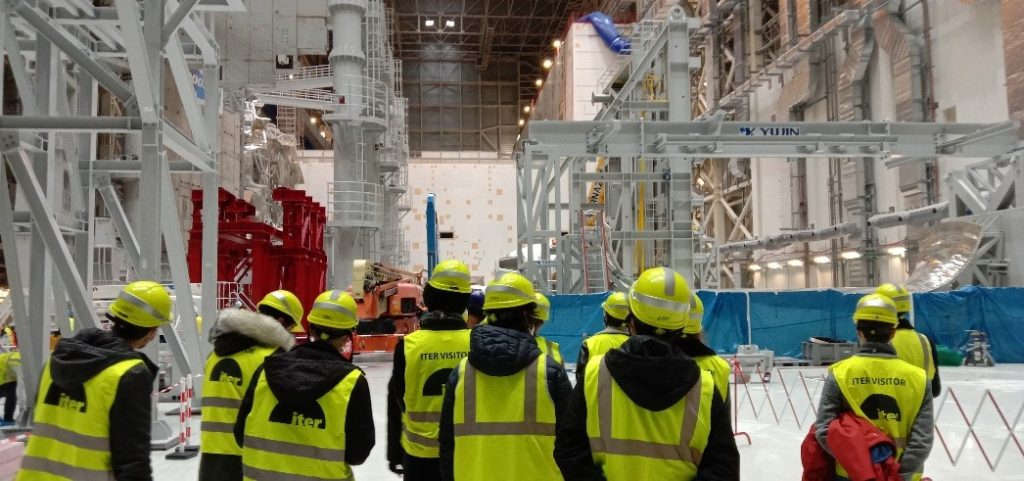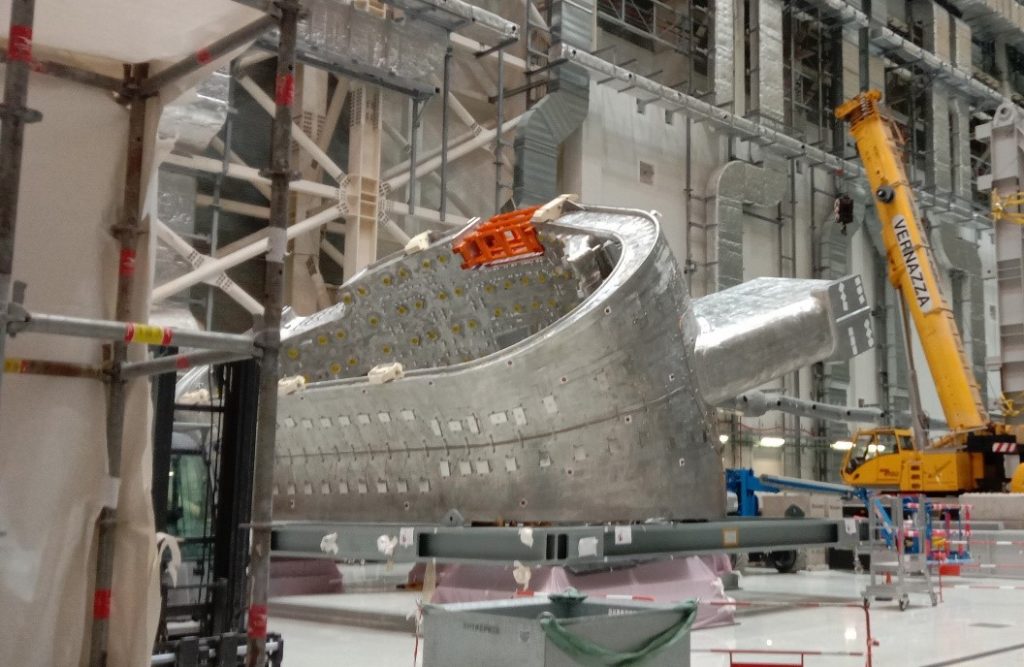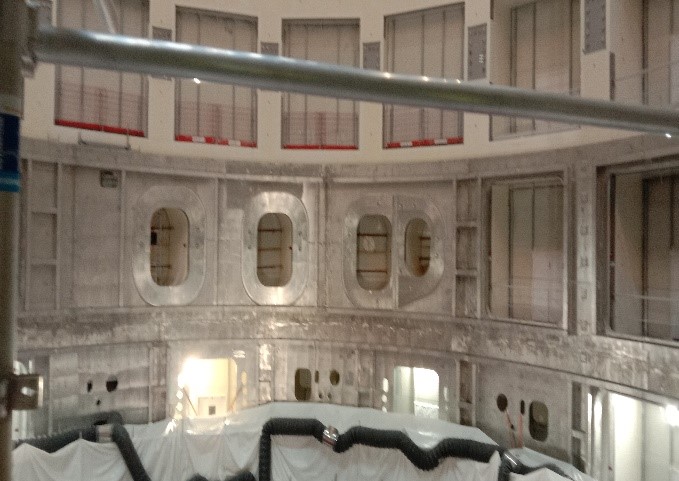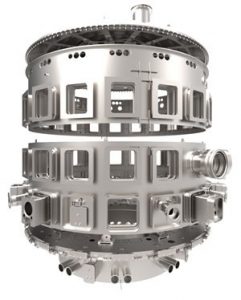By: Achmad Fajar Putranto
When someone asked me “why do you want to continue your education in France?” My answer is “because of fusion”. Then they asked further “why at Aix-Marseille Université (AMU)?” So I replied “because of fusion and ITER1 (International Thermonuclear Experimental Reactor)”. Because I think that because AMU is the closest campus to ITER, I concluded that it is not too difficult to visit there. And finally, on February 19, 2021, I had the opportunity to witness firsthand the splendor of the ITER project!
Introduce, I am Achmad Fajar Putranto, a student from Indonesia who graduated from Undip Physics who is currently studying a master’s degree at Aix-Marseille Université (AMU) plasma science and nuclear fusion program.
Friday, February 19, 2021, I and other master of plasma science and nuclear fusion students along with friends from Fusion EP2 made a visit to ITER. The event is one of a series of Cadarache Winter Event 20213 organized by CEA-IRFM (The French Alternative Energies and Atomic Energy Commission – Institute for Magnetic Fusion Research) in collaboration with several fusion master programs in France and Master Fusion EP.
Before entering the ITER construction site, we are required to wear protective helmets, boots, and thick gloves. As well as a sign that we are verified guests to visit ITER, all visitors are required to wear a visitor card and wear a yellow vest.
The event “ITER master visit 2021” is divided into several series of activities. First, a presentation session related to ITER by Alberto Loarte who is the “ITER section leader” in plasma operations. He explained the itinerary “bringing the sun to earth4” which would eventually be a commercial power reactor whose benefits would be felt by the world; and the challenges experiments that are and will be faced in physics and engineering. There is an interesting statement that he said, “most of those involved in this experiment understand quite well how physics works in tokamak5 ITER but very rarely understand from the glasses engineering. We need more people who understand engineering things at ITER. Because all aspects of engineering here (ITER) are very unique”. And instantly I thought to go deeper into the engineering aspect. In fact, to build a technological work, it takes strong collaboration from the science and engineering sector.
The next session was a direct visit to several ITER component manufacturing sites. It begins by looking directly at the construction of “poloidal field coils”.The creation of ITER components is done by 35 ITER members where each member has his own share (can be seen in figure 1; for countries of contribution from european countries, they are represented by the EU) made in their respective countries.

Due to its large size and very heavy mass (diameters ranging from 17-24 meters with a mass of 200-400 tons), a total of four of the six “poloidal field coils” were built directly in ITER (on-site fabrication; can be seen in figure 2) and for the two smallest “poloidal field coils” (allowing for inter-country delivery) were made by Russia.
After that, we visitors are invited to look into the assembly site of ITER components (Assembly site) shown by figure 3. It is not very clear what is in there except for one part of the vacuum chamber that can be seen in figure 4.



After being inside the assembly site for about 10 minutes, we were all directed to the last place of visit, namely the ITER (cryostat) tokamak curvature framework.Having a height of 30 meters with a diameter of 28 meters, ITER cryostat is the largest stainless steel high-vacuum pressure chamber ever built (16000 m3). In addition to serving as a stopover place for 18 superconductor magnetic coils (with a height of 17 m each with a weight of 298 tons), cryostat also serves as access for additional heaters and diagnostic systems.We were given the opportunity to get into one side of the cryostat. Really, this is the most exciting moment for me because that’s where the vacuum chamber will be placed where the nuclear fusion reaction will take place. Enjoying the atmosphere in there too much, I only took a shot in the right part of me that can be seen in figure 5 (left). 4 ports are visible where three of them will be functioned as access to additional heating Neutral Beam Injection and one as diagnostic system access.


1. ITER is an experimental fusion reactor under construction at Saint Paul Les Durance, France through a consortium of 35 countries.
2. Fusion EP is one of the Erasmus-Mundus master’s programs funded by the European Union.
3. Cadarache Winter Event 2021 is a research-based learning activity organized by CEA-IRFM for fusion master students in France and Fusion EP.
4 “Bringing the sun to earth” is the jargon of the construction of nuclear fusion reactors.
5. Tokamak is a magnetic environment-based fusion experiment reactor.
PS: Despite the ongoing and future challenges faced in the realization of nuclear fusion reactors, in the last 2.5 decades, there have been many new milestones in the development of carved nuclear fusion. I as one of the students who are pursuing this field, certainly have great expectations for the realization of this reactor in the future for the good of all mankind. The key to achieving this great mission is to continue to be optimistic about this dream and keep working. Then all will be realized with the permission of the Almighty.
Courtesy of CPR UNDIP
